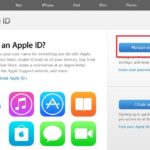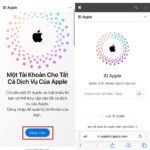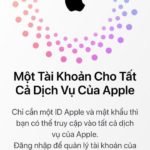According to a recent article by the Wall Street Journal, some iPhone thieves are exploiting security settings, known as the recovery lock, that make it nearly impossible for owners to access their photos, messages, and data, among other things. Some victims reported that their bank accounts were drained after the thieves gained access to their financial apps.
However, it’s important to note that this type of attack is quite difficult to execute. Essentially, the criminal would need to observe the iPhone user entering their device’s password – for example, by looking over their shoulder at a public place – or find a way to trick the device owner into sharing their password.

Thieves have now devised complex methods to gain control of users’ iPhones and permanently lock their devices. (Illustration)
Once they have the passcode, the thief can change the device’s Apple ID, disable “Find My iPhone” to prevent the user from tracking the phone’s location, and then set a recovery lock, a 28-character complex code intended to protect the owner from online hackers.
Apple requires this lock to assist with device resetting, or regaining access to the Apple ID, in an effort to enhance security for users. However, if the thief changes it, the original owner won’t have a new code and will be locked out of their account.
An Apple spokesperson told CNN, “We empathize with those who have gone through this experience and we take any attacks on our users very seriously, however rare they may be. We work tirelessly every day to protect user accounts and data, while continually researching additional protective measures against emerging threats.”
On its website, Apple warns, “You are responsible for maintaining access to your trusted devices and your recovery key. If you lose access to both, you will be permanently locked out of your account.”
Currently, there are steps that users can take to help protect themselves against unauthorized access to their accounts and data.
Protect Your Passcode
An Apple spokesperson told CNN that users can utilize Face ID or Touch ID when unlocking their phones in public places to avoid revealing their passcode to anyone.
Users can also set longer, alphanumeric passcodes to make it harder for bad actors to guess them. Device owners should also immediately change passwords if they suspect that someone may have seen them.
Set Up a Passcode
Within iPhone’s Screen Time settings, the owner can establish restrictions for when children are using the device. This section also includes an option to set up a passcode that any user must enter before they can successfully change the Apple ID.
Regularly Back Up Your Phone
Lastly, users can protect themselves by regularly backing up their iPhones – either through iCloud or iTunes – to ensure that data can be restored in the event of theft. Additionally, users may want to consider storing important photos or other sensitive files and data in a separate cloud service, such as Google Photos, Microsoft OneDrive, Amazon Photos, or Dropbox.
This won’t prevent unauthorized access to the device, but it will limit some of the consequences in terms of data loss if that were to occur.
Source: VTC.vn


































